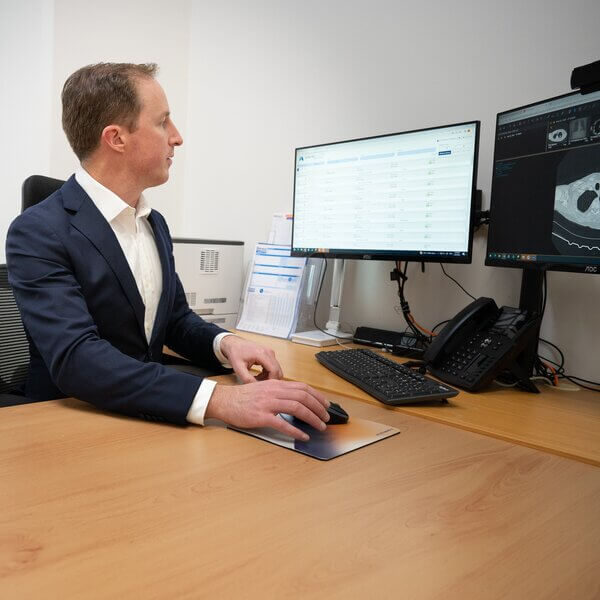Dr Thomas Crowhurst
Advanced medical therapies


Treatment options for lung disease have expanded rapidly in recent years, and it is likely that additional therapeutics will continue to be developed at an increasing pace.
Some examples of advanced medical therapies for lung disease include:
- Antifibrotic drugs:
Fibrotic interstitial lung disease is a serious lung disease that is associated with breathlessness, cough and respiratory failure. One of the most common types of fibrotic interstitial lung disease is ‘idiopathic pulmonary fibrosis’ (IPF). Antifibrotic medication has been shown to slow down the rate of progression of IPF, and has been available on the PBS for this disorder for some time.
In 2022, after studies demonstrated its usefulness in such cases, one of these antifibrotic drugs was also listed on the PBS for ‘progressive fibrotic interstitial lung disease’ from any underlying cause. This means that this important medication is now available for a wider group of patients.
- Biologic treatments for asthma:
Asthma is one of the most common disorders in the community generally and, for some people, it can have a severe impact on their quality of life and impose a substantial health burden despite appropriate treatment with first-line medications like inhalers. Asthma is fundamentally driven by a problem with the immune system in the airways (bronchi). Recent years have seen the development of numerous new ‘biologic’ injectable treatments for asthma that can be highly effective for well-selected patients.
- Endobronchial valves:
Chronic obstructive pulmonary disease (COPD) can cause severe disabling breathlessness despite first-line medical therapies and pulmonary rehabilitation. Part of the cause of breathlessness in many patients with COPD is deranged lung mechanics and especially ‘gas trapping’, where too much air remains stuck inside the chest cavity after a full breath out. Lung volume reduction surgery can be undertaken to remove the most damaged parts of the lung through an operation, thus reducing ‘gas trapping’ and the associated breathlessness; however, this is a major operation, and has significant risks.
Endobronchial valves are small one-way valves that can be inserted via bronchoscopy and which seek to achieve the same fundamental outcome as lung volume reduction surgery, but without the major operation. In carefully selected cases, endobronchial valves can enable significant improvements in both breathlessness and functional capacity, but with a significant risk of collapsed lung (pneumothorax) in the few days after the insertion of the valves.
- Lung transplantation:
Lung transplantation is not a new therapy, but remains a highly specialised advanced treatment option that can provide transformational benefits for patients with end-stage lung disease. Lung transplantation is a complex endeavour and involves an extensive process of assessment, waiting, recovery and life-long after-care. All lung transplantation in South Australia is managed through the SA Lung Transplant Service at the Royal Adelaide Hospital, with the surgery itself being undertaken either at The Alfred in Melbourne or St Vincent’s Hospital in Sydney.
Discussions around all medical therapies, and especially more advanced therapies, require care and diligence to ensure that potential benefits and risks are fully understood. Informed consent is a critical part of the process.

